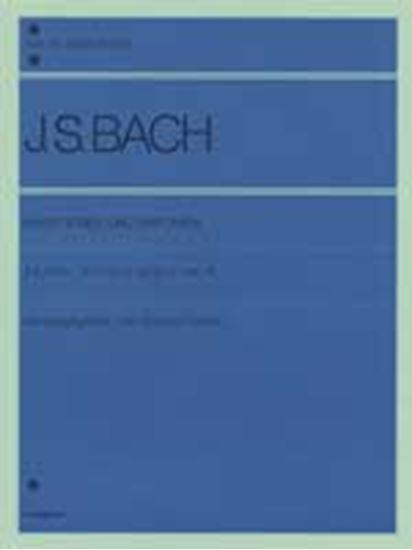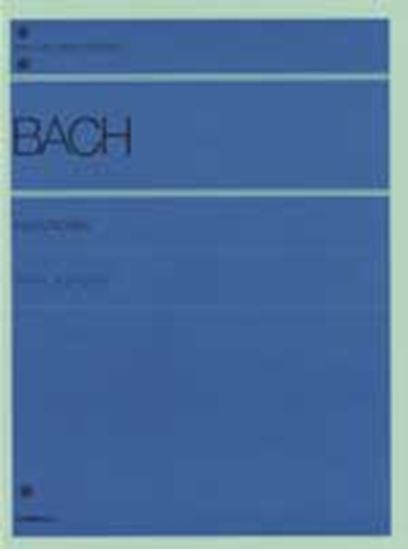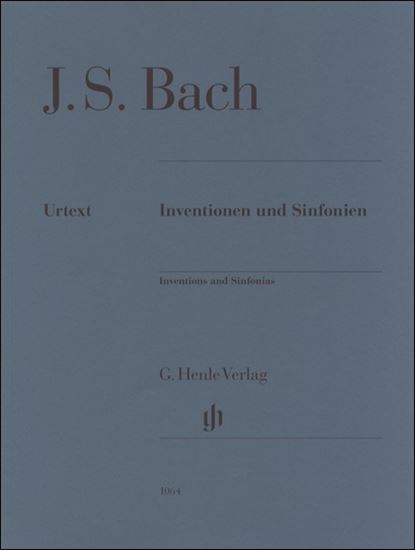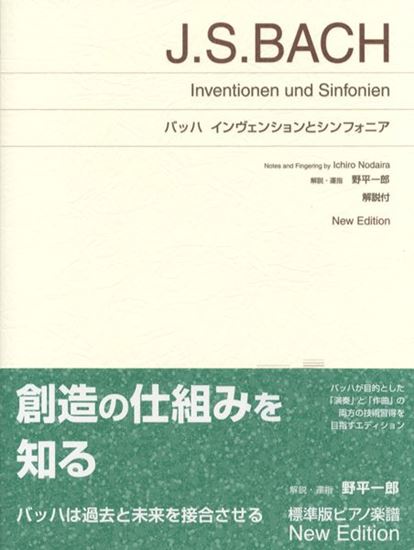Bach, Johann Sebastian : Sinfonia Nr.3 D-Dur BWV 789
Work Overview
Genre:pieces
Total Playing Time:1 min 30 sec
Copyright:Public Domain
Commentary (3)
Author : Takamatsu, Yusuke
Last Updated: September 18, 2020
[Open]
Author : Takamatsu, Yusuke
D major, 4/4 time.
Although it possesses a bright, dance-like character, it is a sophisticated fugue with two counter-subjects, structured as follows: First Exposition (m. 1–) — Interlude 1 (m. 8–) — Second Exposition (m. 10–) — Interlude 2 (m. 12–) — Interlude 3 (m. 14–) — Third Exposition (m. 19–).
In the First Exposition, the subject entry shifts from the upper voice to the lower voice, and two counter-subjects are combined with the subject. In the Third Exposition, contrary to the beginning, the subject entry shifts from the lower voice to the upper voice, and the two counter-subjects are arranged with the subject in a different combination from the First Exposition.
Thematic Entries
- m. 1: Subject
- m. 3: Counter-subject 1
- m. 5: Counter-subject 2
- m. 19: Counter-subject 1
- m. 21: Counter-subject 2
- m. 23: Subject
Thematic Elements
- Subject
- Counter-subject 1
- Counter-subject 2
- Subject
- Counter-subject 1
- Figured Bass
- Counter-subject 2
- Subject
- Subject
- Counter-subject 1
- Counter-subject 2
Although the Second Exposition is brief, the upper voice presents the subject in B minor, its parallel key, while the middle voice plays Counter-subject 2 and the lower voice plays Counter-subject 1. This demonstrates a combination pattern that was absent in the First Exposition due to its initial position.
Author : Hayashikawa, Takashi
Last Updated: March 15, 2018
[Open]
Author : Hayashikawa, Takashi
From the third beat of measure 12 to the second beat of measure 14, the imitation between the upper and middle voices forms a variation of the theme.
Score example provided by: Bärenreiter Verlag
Author : Ooi, Kazurou
Last Updated: March 12, 2018
[Open]
Author : Ooi, Kazurou
Sinfonia No. 3 in D Major
This Sinfonia in D major is optimistic and joyful. The theme is already a sequence. This theme is quite long; it can be considered to begin in the soprano clef in measure 1 and conclude on A in the third beat of measure 3. The shaping of this theme allows for considerable freedom. While the theme itself progresses through a descending sequence, it does not necessarily require a diminuendo. Conversely, a crescendo would also be appropriate. Regarding articulation, staccato applied to pairs of eighth notes (e.g., the second and fourth beats of measure 1) will impart a sense of dynamism and lightness.
If this piece were to be divided into three sections, the first demarcation would likely be at the third beat of measure 14. While the location of the second demarcation might be debatable, let us first consider the first one. The journey to measure 14 is a long one. Along the way, there is a modulation to the parallel minor, B minor. How one interprets this key is a crucial aspect. Is B minor stronger or weaker than D major? Is the tension higher or lower? What about the timbre? Experiment with various approaches.
What the author considers is where the peak of tension lies within these first 14 measures. It could be the third and fourth beats of measure 11, or perhaps where all three voices conclude their performance of the theme from measure 6 to measure 7. The performer should feel free to express their own interpretation, but in any case, observing the soprano's movement from the third beat of measure 12, it is safe to assume that the energy gradually diminishes, following a descending sequence, until the third beat of measure 14.
From the third beat of measure 14, a joyful mood, full of anticipation, gradually returns, as if sweeping away the previous somber narrative, reaching a peak of exhilaration at measure 18. Therefore, a crescendo leading up to that point would be appropriate.
Above all, this Sinfonia is optimistic and joyful; avoid being overly serious and fully convey Bach's good humor. Since both thirds and sixths appear frequently, it can also serve as an excellent etude.
PTNA & Partner Channel Videos(3items)
Sheet MusicView More
Scores List (42)

カワイ出版

(株)ヤマハミュージックエンタテインメントホールディングス

(株)全音楽譜出版社

(株)全音楽譜出版社

(株)ドレミ楽譜出版社

(株)音楽之友社

(株)全音楽譜出版社

(株)音楽之友社

(株)音楽之友社

(株)ドレミ楽譜出版社

(株)ドレミ楽譜出版社

(株)ドレミ楽譜出版社

(株)ドレミ楽譜出版社

ヘンレー

ヘンレー

カワイ出版

(株)渓水社

(株)音楽之友社

(株)全音楽譜出版社

(株)エー・ティ・エヌ

(株)全音楽譜出版社

カワイ出版

(株)音楽之友社

(株)音楽之友社

ヘンレー

ヘンレー

(株)学研プラス


















